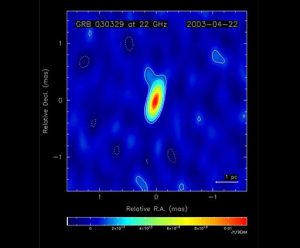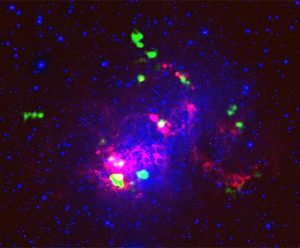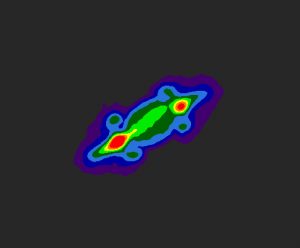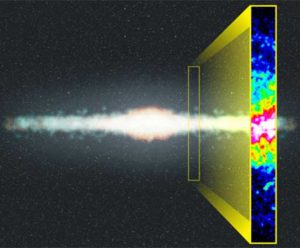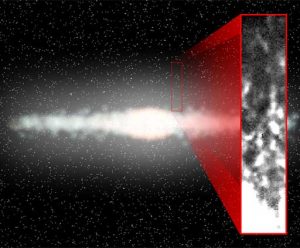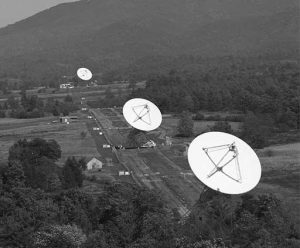The closest Gamma Ray Burst (GRB) yet known is providing astronomers with a rare opportunity to gain information vital to understanding these powerful cosmic explosions. Extremely precise radio-telescope observations already have ruled out one proposed mechanism for the bursts.
Surprising Image Revises Understanding Of Dwarf Galaxies
An intensive study of a neighboring dwarf galaxy has surprised astronomers by showing that most of its molecular gas — the raw material for new stars — is scattered among clumps in the galaxy’s outskirts, not near its center as they expected.
Speed of Gravity Measured for First Time
Taking advantage of a rare cosmic alignment, scientists have made the first measurement of the speed at which the force of gravity propagates, giving a numerical value to one of the last unmeasured fundamental constants of physics.
Clouds Dominate the Galactic Halo
Using the exquisite sensitivity of the National Science Foundation’s Green Bank Telescope, astronomer Jay Lockman of the National Radio Astronomy Observatory in Green Bank, West Virginia, has produced the best cross-section ever of the Milky Way Galaxy’s diffuse halo of hydrogen gas.
Clouds Floating High Above Milky Way
GREEN BANK, WV — New studies with the National Science Foundation’s Robert C. Byrd Green Bank Telescope (GBT) have revealed a previously unknown population of discrete hydrogen clouds in the gaseous halo that surrounds the Milky Way Galaxy.
Binary Stars ‘Flare’ With Predictable Cycles
Astronomers have completed a 5-year campaign to monitor continuously radio flares from two groups of binary star systems. This survey is of special interest because it provides evidence that certain binary star systems have predictable activity cycles like our Sun.






